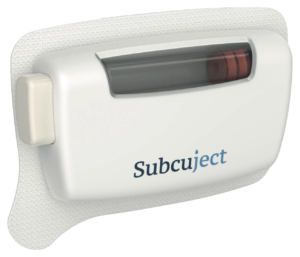
Around the world people are believing that wearable injectors are expensive and complex. Jesper Roested, Chief Executive Officer of Subcuject, explains how those beliefs could be false.
Jesper Roested expressed that this technology is part of the modern-day pharma industry; the at-home industry is rapidly growing. The pharmaceutical industry is shifting towards patient-centric and putting the patience’s comfort first; this including where they are being treated—ex: their homes. Having patients being treated at home will help with the strain in the healthcare system due to the growing and aging of our population.
A wearable injector is a small device that a patient would stick on their body and with a press of a button, the device will inject the needle and release the drug, then retract the needle. Once this process is completed, the wearable injector should be disposed.
Cost and complexity is a big concern for this device. It is explained that these devices should not be complex for users; the more complex the device is, the more expensive the device will be. Currently, the contract manufacturing organization price is US$20-30 at volume production. This cost to pharma companies is too high for many drugs.
With Subcuject, it is foreseeable that this device could be created as a “simple-to-use” device; making it simple for patients to understand and use easily, leading the price of the product to lessen.
Jesper concluded about the necessity of changing the perception of wearable drugs being complex and expensive, to easy-to-use and affordable. Subcuject is developing an innovative wearable device for bolus injection. This device Subcuject is creating will go against all beliefs of wearable injectors being expensive and complex. Subcuject’s solution is based on a natural process and does not use any electromechanical or electronic parts.

